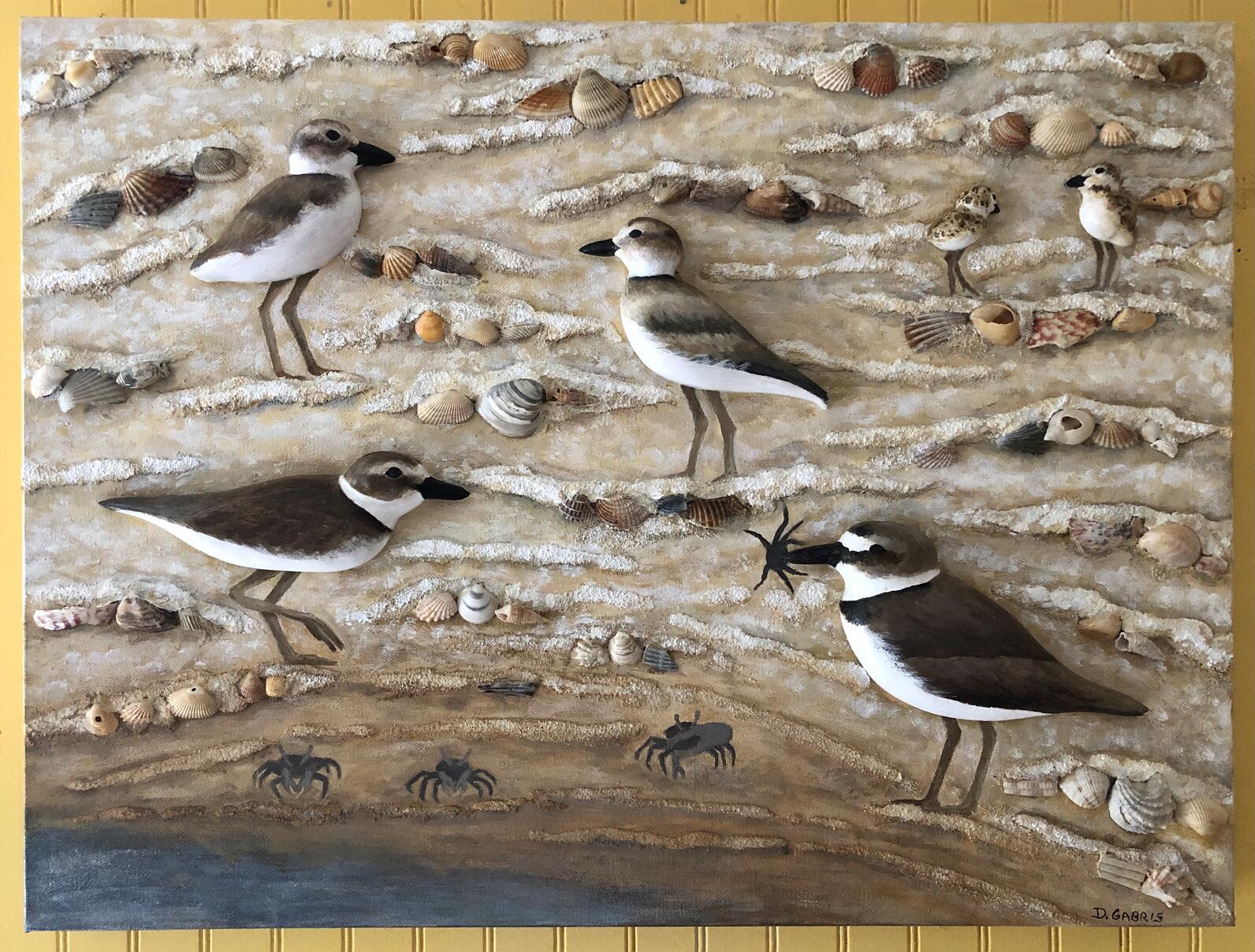Capturing peoples’ interest and making meaningful connections is necessary for successful conservation. Art has become a critical way to connect to volunteers, visitors, and locals, while illustrating the ways we can keep birds safe. Last year, a call for volunteers went out the week before Memorial Day - the first of many serendipitous events leading to the creation of a unique, large-scale art project.
We looked for people to steward sites busy with boaters and beach-nesting birds, and Deborah responded to the call. Before coming to Florida, Deborah spent 12 years volunteering along the California coast with a marine mammal rescue group. While volunteering, she became familiar with Snowy Plovers and other shorebirds that call those beaches home. With her previous experience, she understood the importance of our work and was excited to visit a new beach and learn more about Florida’s beach-nesting species.
While spending many hours on the beach with Audubon staff, Deborah learned more about the lives of the beach nesting birds that we work with. While discussing the various plumages of sea and shorebirds throughout the year, we also learned that Deborah has a long career in fine arts in the media of direct steel welded sculpture with an acetylene oxygen torch. An idea was born.
Many people do not have an opportunity to see a bird’s entire life cycle. For example, think about a Wilson’s Plover family: Beachgoers (and biologists) are likely to see the adults, but rarely the chicks because of how small and well camouflaged they are. Deborah suggested having a single art piece for each of our focal species, depicting the different plumages of the birds and the stages of the chicks, so people can see all the changes throughout the season in one place.
Deborah launched into a brand new project: Creating 3D assemblages for each of the five focal species, carved out wood decoys and glued onto a canvas along with sand and shell pieces.
“A common theme throughout the conversation was, ‘the more interesting, unique, and good-looking the beach scene canvas, the more likely people are to remember what they saw,’” Deborah recalls.

Over the past few months, I have worked closely with Deborah as she completed extensive research learning about the size, shape, and plumage colors of each of the five focal species. I shared the unique behaviors these birds have from a shorebird biologist’s point of view, so that each piece she creates is realistic and helps tell the story of each species.
Recently she completed the second canvas, depicting the life stages of Wilson’s Plovers foraging near an ephemeral pool. As I look over the art, I love that the Wilson’s Plovers are accurately displayed by highlighting the large and stocky size of the bill (for plovers, it is a big bill!) with a fiddler crab pinched between, about to be eaten. All of the life stages are present and popping out of the canvas. Deborah carefully carved each bird from wood true to size, then painted the correct colors for the age, and put them in their natural habitat with sand and shells from the beach. Next up: a canvas featuring Least Terns.
There are a variety of ways you can volunteer with Audubon Florida’s coastal seabird and shorebird program. Contact Richard.Cassell@audubon.org if you are interested in being one of our talented and valuable volunteers.





